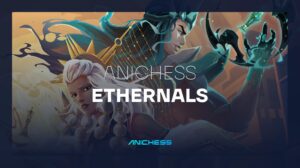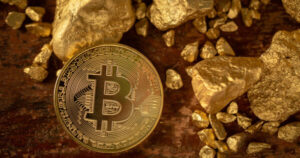Beginner’s Guide: Create & Mint NFTs Easily Without Coding Skills

Your Ultimate Guide to Creating and Minting NFTs: A Beginner’s Journey
Introduction to Digital Collectibles
Are you ready to explore the thrilling realm of digital collectibles? If you’ve ever been curious about how to create and mint NFTs but felt intimidated by technical jargon, this guide is tailored for you. NFTs, or non-fungible tokens, are unique digital assets that can represent various forms of content, including art, music, videos, and memes. They have gained immense popularity for their ability to verify ownership and authenticity of digital creations.
- Introduction to Digital Collectibles
- Essential Tools for NFT Creation
- Selecting the Right NFT Marketplace
- 1. OpenSea
- 2. Rarible
- 3. Zora
- 4. Shib Marketplace (For Shiba Inu Enthusiasts)
- TL;DR: Choose What Resonates with You
- Setting Up Your Crypto Wallet
- Steps to Set Up Your Wallet
- Uploading and Creating Your NFT
- Steps to Create Your NFT
- Minting Your NFT: Making It Official
- Understanding Minting
- Finalizing the Minting Process
- What is Lazy Minting?
- In Summary
- Listing and Selling Your NFT (If Desired)
- Setting Your Price
- Promoting Your NFT
- Pro Tips for First-Time NFT Creators
- Watch Your Budget for Gas Fees
- Double-Check Your Metadata
- Stay Vigilant Against Scams
- Quick Rule of Thumb
- Conclusion: You’re Ready to Dive into NFTs
The best part? You don’t need to be a tech expert to join this digital movement. Thanks to user-friendly platforms, creating an NFT is now more accessible than ever. In this article, we’ll guide you through a straightforward, step-by-step process to create and mint your very first NFT—no complicated coding required. Whether you’re an artist, a collector, or simply curious, you’ll soon have your own digital creation on the blockchain.
Essential Tools for NFT Creation
Before diving into the NFT space, it’s crucial to ensure you have the right tools at your disposal.
-
A Digital Asset: This could be anything you wish to convert into an NFT—be it a stunning piece of artwork, a catchy tune, a memorable photograph, or even a short video clip. Consider it your digital masterpiece, ready to be immortalized on the blockchain.
-
A Crypto Wallet: Think of this as your digital purse. Wallets like MetaMask or Coinbase Wallet allow you to store cryptocurrencies and connect to NFT platforms, helping you manage your NFTs and conduct transactions securely.
-
Cryptocurrency for Gas Fees: Minting NFTs typically requires a small amount of cryptocurrency to cover “gas fees,” which are necessary for maintaining the blockchain. Most often, you’ll need Ethereum (ETH) or Polygon’s MATIC, depending on your chosen platform.
-
Optional Enhancements: Giving your NFT a catchy name, an engaging description, and unique traits can help it stand out in the crowded marketplace. These details add depth to your creation and can increase its value for potential collectors.
With these essentials in place, you’re ready to embark on your NFT journey!
Selecting the Right NFT Marketplace
Once your wallet is set up and your digital asset is polished, it’s time to choose the platform where you’ll create and mint your NFTs. NFT marketplaces serve as the digital galleries and stores of the blockchain world.
However, not all marketplaces are created equal. Some are more user-friendly, while others may charge fees only upon sale. Here are a few beginner-friendly options to consider:
1. OpenSea
Supports: Ethereum, Polygon
OpenSea is the pioneer of NFT platforms, akin to Amazon for digital collectibles.
Pros:
- Large audience potential
- Easy lazy minting (no upfront gas fees)
- Supports multiple blockchains
Cons:
- Service fees (2.5%) on sales
- Can be overwhelming for newcomers
2. Rarible
Supports: Ethereum, Tezos, Polygon, and more
Rarible combines marketplace features with community engagement, offering creators more control.
Pros:
- Built-in creator royalties
- Governance token ($RARI) allows user voting on upgrades
- Simple minting process
Cons:
- Smaller audience compared to OpenSea
- Fees still apply (2.5%), split between buyer and seller
3. Zora
Supports: Ethereum, Base
Zora is a minimalist platform that doubles as a protocol, ideal for creators who want full control over their minting experience.
Pros:
- No marketplace fees
- Open-source and on-chain
- Excellent for experimental art and culture drops
Cons:
- Less mainstream visibility
- May feel abstract for total beginners
4. Shib Marketplace (For Shiba Inu Enthusiasts)
Built on: Shibarium
This platform caters to the SHIB community, offering a gasless, community-driven space for NFT creation.
Pros:
- No gas fees due to Shibarium
- Community-focused and meme-friendly
- Integrates seamlessly into the Shiba Inu ecosystem
Cons:
- Smaller audience currently
- Still developing creator tools and visibility
TL;DR: Choose What Resonates with You
- For broad exposure and lazy minting, OpenSea is your best bet.
- If you prefer community engagement and governance perks, Rarible is a great choice.
- For zero fees and experimental drops, Zora is calling your name.
- If you’re part of the Shib community, the Shib Marketplace is your ideal space.
Whichever platform you select, ensure it supports your wallet and preferred blockchain, bringing you one step closer to launching your first NFT.
Setting Up Your Crypto Wallet
Before you can create and mint NFTs, establishing a crypto wallet is essential. This digital vault holds your cryptocurrency and facilitates interactions with NFT marketplaces.
Steps to Set Up Your Wallet
-
Download a Wallet (like MetaMask): Visit the official site of your chosen wallet and download the browser extension or mobile app. MetaMask is particularly popular among beginners for its simplicity and compatibility with most NFT platforms.
-
Create a Secure Password and Backup Your Recovery Phrase: During setup, you’ll need to create a strong password. Then, you’ll receive a recovery phrase—a unique set of 12–24 words that acts as your master key. Write it down and store it securely offline; losing it means losing access to your wallet.
-
Connect Your Wallet to an NFT Marketplace: Once your wallet is ready, navigate to your chosen NFT platform. Look for the “Connect Wallet” button, usually located in the top right corner, and follow the prompts to approve the connection. You’re now ready to create and mint NFTs!
Setting up a wallet may seem daunting initially, but it’s your gateway to the NFT world. Just remember to keep your keys safe.
Uploading and Creating Your NFT
With your marketplace selected and wallet connected, it’s time for the exciting part: uploading your digital asset and preparing it for the blockchain.
Steps to Create Your NFT
-
Click “Create” on the Platform: Most marketplaces feature a prominent “Create” button on their homepage. Click it to begin.
-
Upload Your File: This is where your art takes the spotlight. Whether it’s a digital illustration, a catchy tune, or a meme, upload your file. Most platforms accept common formats like JPG, PNG, MP4, MP3, and GIF.
-
Fill Out the Metadata: Metadata adds context to your NFT. You’ll need to provide:
- Name: A catchy title
- Description: The story or vibe behind your creation
- Properties or Traits: Optional but beneficial for collections or rarity
-
Choose a Blockchain: Decide which network your NFT will reside on. Common options include:
- Ethereum: The classic choice, widely supported but may incur higher fees
- Polygon: A more cost-effective, eco-friendly alternative
- Shibarium: Ideal for those within the SHIB ecosystem, offering gasless transactions
Once you’ve uploaded your file and filled in the details, you’re just one click away from minting your NFT.
Minting Your NFT: Making It Official
After uploading your digital creation and adding the necessary details, it’s time to make your NFT official through the minting process.
Understanding Minting
Minting refers to the act of publishing your digital file on the blockchain. It’s akin to stamping your creation with a digital seal, confirming its authenticity. Once minted, your NFT becomes a unique, ownable item with a traceable history.
Finalizing the Minting Process
To complete the minting, your platform will prompt you for confirmation. You’ll click a button like “Mint” or “Create,” and your wallet will request approval for the transaction. This usually involves a small gas fee to cover the cost of writing your NFT onto the blockchain.
What is Lazy Minting?
Lazy minting is a clever option for those who want to create NFTs without upfront costs. Instead of paying gas fees immediately, your NFT remains unminted until someone purchases it. This approach is ideal for beginners looking to explore the NFT space without financial commitment.
In Summary
Minting transforms your digital idea into a verified NFT, permanently recorded on the blockchain. Whether you choose the traditional route or opt for lazy minting, you’re now part of the NFT creator community.
Listing and Selling Your NFT (If Desired)
After creating and minting your NFTs, selling them is optional. However, if you’re ready to enter the NFT market, listing your creation is the next step.
Setting Your Price
Most platforms offer two primary pricing options:
- Fixed Price: You set a specific price for your NFT.
- Auction: Allow the market to determine the price by setting a starting bid and time limit.
If you’re unsure about pricing, research similar NFTs on the platform to gauge market rates. Remember, pricing is a blend of art, strategy, and intuition.
Promoting Your NFT
Simply creating your NFT doesn’t guarantee visibility. Here are some tips to enhance exposure:
- Share on Social Media: Utilize platforms like X, Instagram, TikTok, or Threads. Use relevant hashtags like #NFTart or #NFTdrop.
- Tell Your Story: Share the inspiration behind your creation; context can resonate with potential buyers.
- Engage with Communities: Join Discord servers, Reddit threads, or Web3 creator groups to connect with fellow NFT enthusiasts and potential collectors.
Note: You don’t have to rush into selling. Many creators prefer to build a portfolio and enjoy the learning process before focusing on profits.
When you’re ready to list, remember—you’re launching a digital collectible into the world, and its journey is just beginning.
Pro Tips for First-Time NFT Creators
You’re almost there—ready to create and mint NFTs like a pro! Before you take the final leap, here are some common pitfalls to avoid.
Watch Your Budget for Gas Fees
Gas fees can add up quickly, especially on networks like Ethereum during peak times. Before minting, check the estimated gas fees in your wallet. If they seem high, consider waiting for a quieter time or using a more affordable blockchain like Polygon or Shibarium.
Double-Check Your Metadata
Once you hit “mint,” your NFT’s information is locked in. Review the name, description, and traits carefully. Mistakes can’t be edited later, so ensure everything is accurate before proceeding.
Stay Vigilant Against Scams
If a site promises instant riches, requests your seed phrase, or looks untrustworthy, steer clear. Stick to reputable platforms and verify URLs. Protecting your wallet and your assets is crucial in the NFT space.
Quick Rule of Thumb
If something feels off, take a moment to pause. Research or consult verified NFT communities. The Web3 world is exciting but can be unpredictable—staying informed is part of the journey.
Conclusion: You’re Ready to Dive into NFTs
See? It’s not as intimidating as it seems. With just a digital file, a wallet, and a few clicks, you can create and mint NFTs without any coding knowledge. Whether you’re an artist, musician, collector, or simply curious about Web3, the tools are now at your fingertips—and they’re more beginner-friendly than ever.
Minting your first NFT is about more than just technology; it’s about creativity, ownership, and sharing something uniquely yours with the world. So go ahead—experiment, explore new platforms, try different formats, and even collaborate with others.
The NFT landscape is still evolving, and there’s ample opportunity for fresh voices—yours included.







